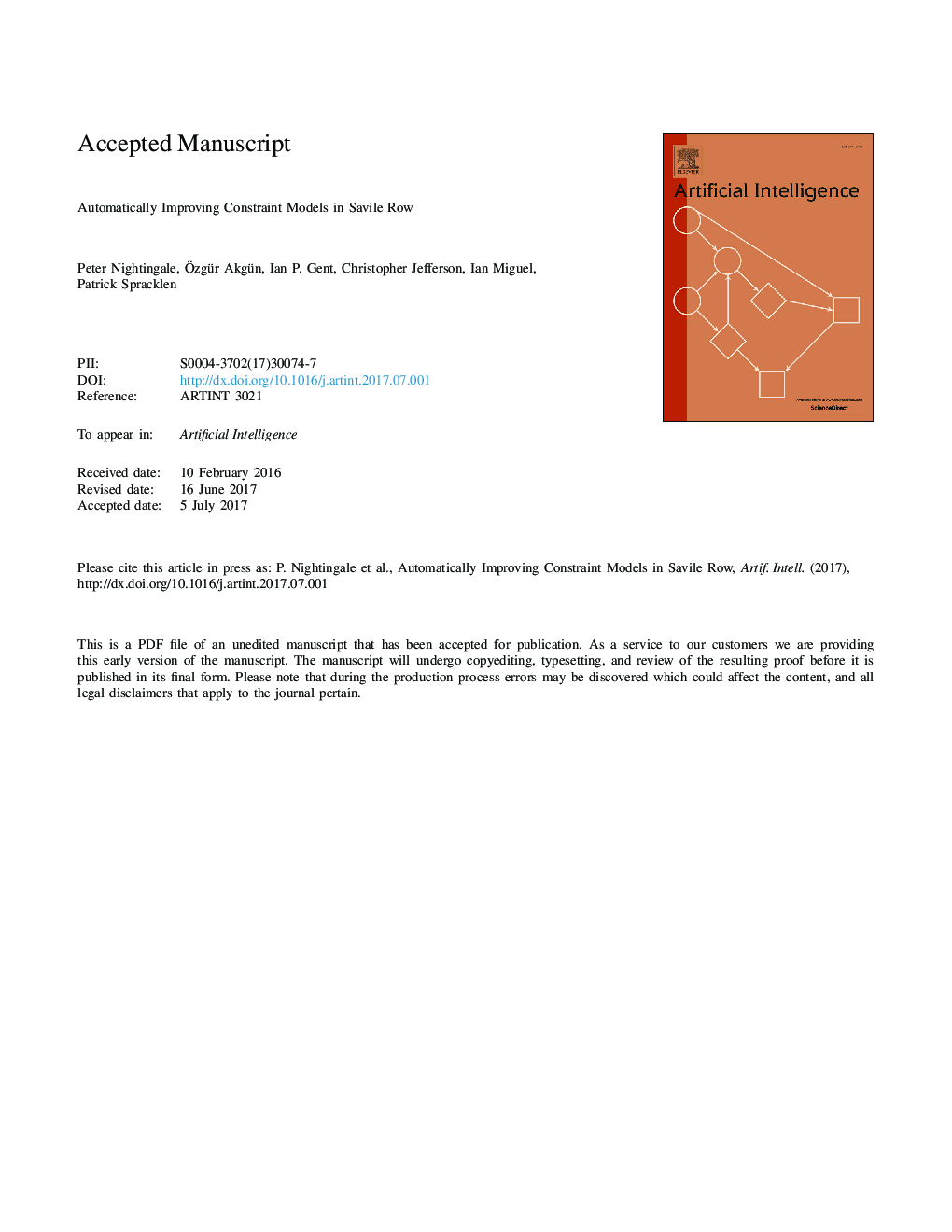| Article ID | Journal | Published Year | Pages | File Type |
|---|---|---|---|---|
| 4942042 | Artificial Intelligence | 2017 | 46 Pages |
Abstract
When solving a combinatorial problem using Constraint Programming (CP) or Satisfiability (SAT), modelling and formulation are vital and difficult tasks. Even an expert human may explore many alternatives in modelling a single problem. We make a number of contributions in the automated modelling and reformulation of constraint models. We study a range of automated reformulation techniques, finding combinations of techniques which perform particularly well together. We introduce and describe in detail a new algorithm, X-CSE, to perform Associative-Commutative Common Subexpression Elimination (AC-CSE) in constraint problems, significantly improving existing CSE techniques for associative and commutative operators such as +. We demonstrate that these reformulation techniques can be integrated in a single automated constraint modelling tool, called Savile Row, whose architecture we describe. We use Savile Row as an experimental testbed to evaluate each reformulation on a set of 50 problem classes, with 596 instances in total. Our recommended reformulations are well worthwhile even including overheads, especially on harder instances where solver time dominates. With a SAT solver we observed a geometric mean of 2.15 times speedup compared to a straightforward tailored model without recommended reformulations. Using a CP solver, we obtained a geometric mean of 5.96 times speedup for instances taking over 10 seconds to solve.
Keywords
Related Topics
Physical Sciences and Engineering
Computer Science
Artificial Intelligence
Authors
Peter Nightingale, Ãzgür Akgün, Ian P. Gent, Christopher Jefferson, Ian Miguel, Patrick Spracklen,
